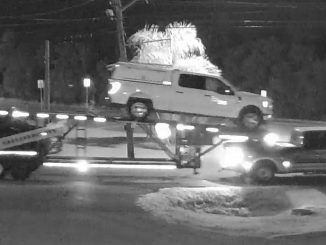
West bank levee could head southward
Salvation of the west bank of St. Charles Parish could rest in the construction of a hurricane protection levee along the Intracoastal Canal south of Lake Salvador. That would take the place of other proposed routes for the Donaldsonville to the Gulf levee planned by the U. S. Army Corps of Engineers.One of those other routes would take the levee through St. Charles and up against the subdivisions along U. S. 90. That route has been questioned because of the ponding effect it would have in the subdivisions during a heavy rainfall.
The Intracoastal Canal route is gaining support because it would be shorter – – 23 miles compared to 53 miles. It would extend from Larose to the Mississippi River south of Lafitte and protect much more area.
Smaller levees would also be needed in St. Charles to protect populated areas from Lake Salvador waters. This would be somewhat similar to much of the protection provided in under-sea level Holland which consists of multiple levees in some areas.
Some environmentalists argue against the Intracoastal Canal route, claiming its footprint would destroy hundreds of acres of marsh. But without that protection, that marsh could become open water if another Katrina hit 20 miles more to the west. They also argue that it would encourage development of the wetlands north of the levee. But present laws prevent such development of wetlands whether they are north or south of such a levee. And that would be changed only if we let it be.
At the present time, the Larose-Lafitte route seems to be the most practical and beneficial. By stopping any potential surges from the Gulf further south, it would lessen the destructive impact any future hurricanes would have on our population. And we must remember that levees can protect wetlands as well as populated areas.




Be the first to comment